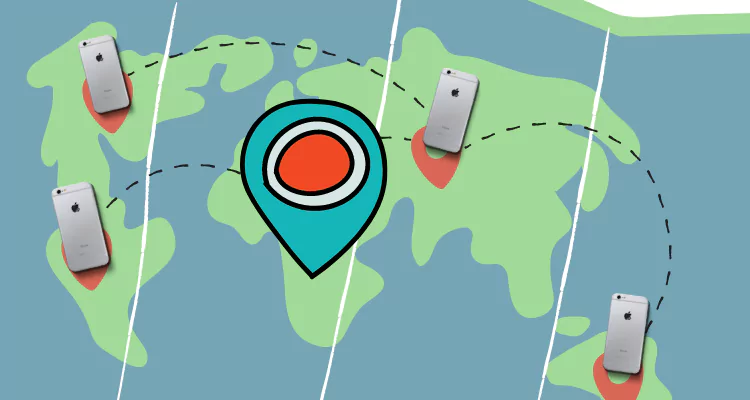How to Detect Fake GPS locations? Best Solution in 2024
The global positioning system (GPS) has become an essential technology in our daily lives. It’s used in navigation systems, location-based services, and tracking devices. However, with the rise of location-based apps and services, the possibility of fake GPS locations has also increased. In this article, we’ll take a look at some of the methods that can be used to detect fake GPS locations.

1. What is a Fake GPS Location?
A fake GPS location is when the location data on a device has been manipulated to appear as though it’s in a different location than it actually is. This is usually done using GPS spoofing software or apps. While GPS spoofing can have legitimate uses, such as testing GPS-based apps or games, it can also be used for malicious purposes, such as bypassing location-based restrictions or to misrepresent the location of a device.
People may fake their location using GPS spoofing apps like Aimerlab MobiGo, jailbreaking or rooting devices, vpn like NordVPN, Wi-Fi spoofing, and emulators.

2. Why is it important to detect Fake GPS locations?
Fake GPS locations can be used for malicious purposes, such as committing fraud, spreading false information, or bypassing location-based restrictions. It’s essential to detect fake GPS locations to prevent these types of activities and to protect personal information.
3. How to Detect Fake GPS Locations?
3.1 Check the Location Accuracy
One way to detect a fake GPS location is to check the location accuracy. When using GPS to determine your location, the accuracy of the location data can vary depending on various factors, such as the number of GPS satellites in view and the strength of the GPS signal. If the reported location accuracy is unusually high or low, it may be an indication of a fake GPS location.
3.2 Look for Inconsistencies
If the GPS location data is inconsistent with other information, such as the time or the speed at which the device is moving, it may be an indication of a fake GPS location. For example, if the device is reporting that it is moving at a high speed, but the location data indicates that it is stationary, this could be a sign of a fake GPS location.
3.3 Use GPS Testing Apps
There are many GPS testing apps available that can help determine whether a GPS location is real or fake. These apps can show the number of GPS satellites in view, the strength of the GPS signal, and other information that can help identify a fake GPS location.
3.4 Check for GPS Spoofing Apps
If the device is jailbroken or rooted, it may be possible to install GPS spoofing apps that can fake the GPS location. Check the device for any installed apps that may be capable of spoofing the GPS location.
3.5 Use Anti-Spoofing Technology
Anti-spoofing technology is designed to prevent GPS signals from being spoofed or jammed. Some GPS receivers have built-in anti-spoofing technology, while others require an external device. Using anti-spoofing technology can help prevent fake GPS locations and protect personal information.
3.6 Check for Network Based Location
Some smartphones and tablets use network-based location services to determine the location of the device. These services use cellular towers or Wi-Fi access points to triangulate the device’s location. If the device is using network-based location services, it can help detect fake GPS locations because the reported location may be inconsistent with the location of nearby cellular towers or Wi-Fi access points.
4. Conclusion
While the methods listed above can help identify fake GPS locations, it’s important to note that none of these methods can guarantee that a GPS location is fake, and some methods may not be effective against more advanced fake GPS techniques. However, using a combination of these methods can help increase the chances of detecting a fake GPS location. It’s essential to be aware of the risks associated with fake GPS locations, and to take steps to protect your device and personal information from potential misuse. By using these methods and staying vigilant, you can help ensure that your GPS location is accurate and trustworthy.
In addition to the methods discussed, it’s also important to keep your device up to date with the latest security patches and updates. Hackers and malicious actors are constantly looking for vulnerabilities in GPS technology, and staying up to date can help prevent these types of attacks.
Finally, it’s important to be mindful of the apps and services that you use. Some apps may require access to your GPS location, and it’s important to only grant access to apps that you trust. Be sure to read the privacy policy of any app before installing it and only install apps from trusted sources.
In conclusion, detecting fake GPS locations is an important step in protecting personal information and preventing malicious activities. By using a combination of the methods discussed, staying up to date with the latest security patches and updates, and being mindful of the apps and services that you use, you can help ensure that your GPS location is accurate and trustworthy.




